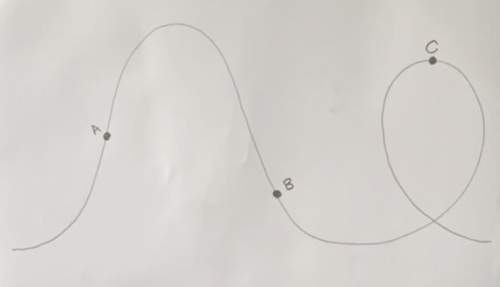
Physics, 09.12.2020 22:00 mmoreno8041
27. at the top of a projectiles path above earth, the acceleration of an object is what ?

Answers: 3


Other questions on the subject: Physics

Physics, 21.06.2019 23:10, itzlianne
A248-g piece of copper is dropped into 390 ml of water at 22.6 °c. the final temperature of the water was measured as 39.9 °c. calculate the initial temperature of the piece of copper. assume that all heat transfer occurs between the copper and the water. remember, the density of water is 1.0 g/m
Answers: 1

Physics, 22.06.2019 00:00, tsupreme
1134567 a jet with mass m = 1.1 ă— 105 kg jet accelerates down the runway for takeoff at 2 m/s2. 1) what is the net horizontal force on the airplane as it accelerates for takeoff? 2.2*10^5 n your submissions: 2.2*10^5 computed value: 220000submitted: saturday, january 26 at 2: 41 pm feedback: correct! 2) what is the net vertical force on the airplane as it accelerates for takeoff? 0 n your submissions: 0 computed value: 0submitted: saturday, january 26 at 2: 41 pm feedback: correct! 3) once off the ground, the plane climbs upward for 20 seconds. during this time, the vertical speed increases from zero to 21 m/s, while the horizontal speed increases from 80 m/s to 95 m/s. what is the net horizontal force on the airplane as it climbs upward? n 4) what is the net vertical force on the airplane as it climbs upward? n 5) after reaching cruising altitude, the plane levels off, keeping the horizontal speed constant, but smoothly reducing the vertical speed to zero, in 13 seconds. what is the net horizontal force on the airplane as it levels off? n 6) what is the net vertical force on the airplane as it levels off?
Answers: 1

Physics, 22.06.2019 00:30, Solany6426
Part f - example: finding two forces (part i) two dimensional dynamics often involves solving for two unknown quantities in two separate equations describing the total force. the block in (figure 1) has a mass m=10kg and is being pulled by a force f on a table with coefficient of static friction îľs=0.3. four forces act on it: the applied force f (directed î¸=30â above the horizontal). the force of gravity fg=mg (directly down, where g=9.8m/s2). the normal force n (directly up). the force of static friction fs (directly left, opposing any potential motion). if we want to find the size of the force necessary to just barely overcome static friction (in which case fs=îľsn), we use the condition that the sum of the forces in both directions must be 0. using some basic trigonometry, we can write this condition out for the forces in both the horizontal and vertical directions, respectively, as: fcosî¸â’îľsn=0 fsinî¸+nâ’mg=0 in order to find the magnitude of force f, we have to solve a system of two equations with both f and the normal force n unknown. use the methods we have learned to find an expression for f in terms of m, g, î¸, and îľs (no n).
Answers: 2
You know the right answer?
27. at the top of a projectiles path above earth, the acceleration of an object is what ?...
Questions in other subjects:


Mathematics, 22.07.2019 14:00

History, 22.07.2019 14:00

Mathematics, 22.07.2019 14:00

History, 22.07.2019 14:00


Health, 22.07.2019 14:00

Biology, 22.07.2019 14:00

Mathematics, 22.07.2019 14:00




